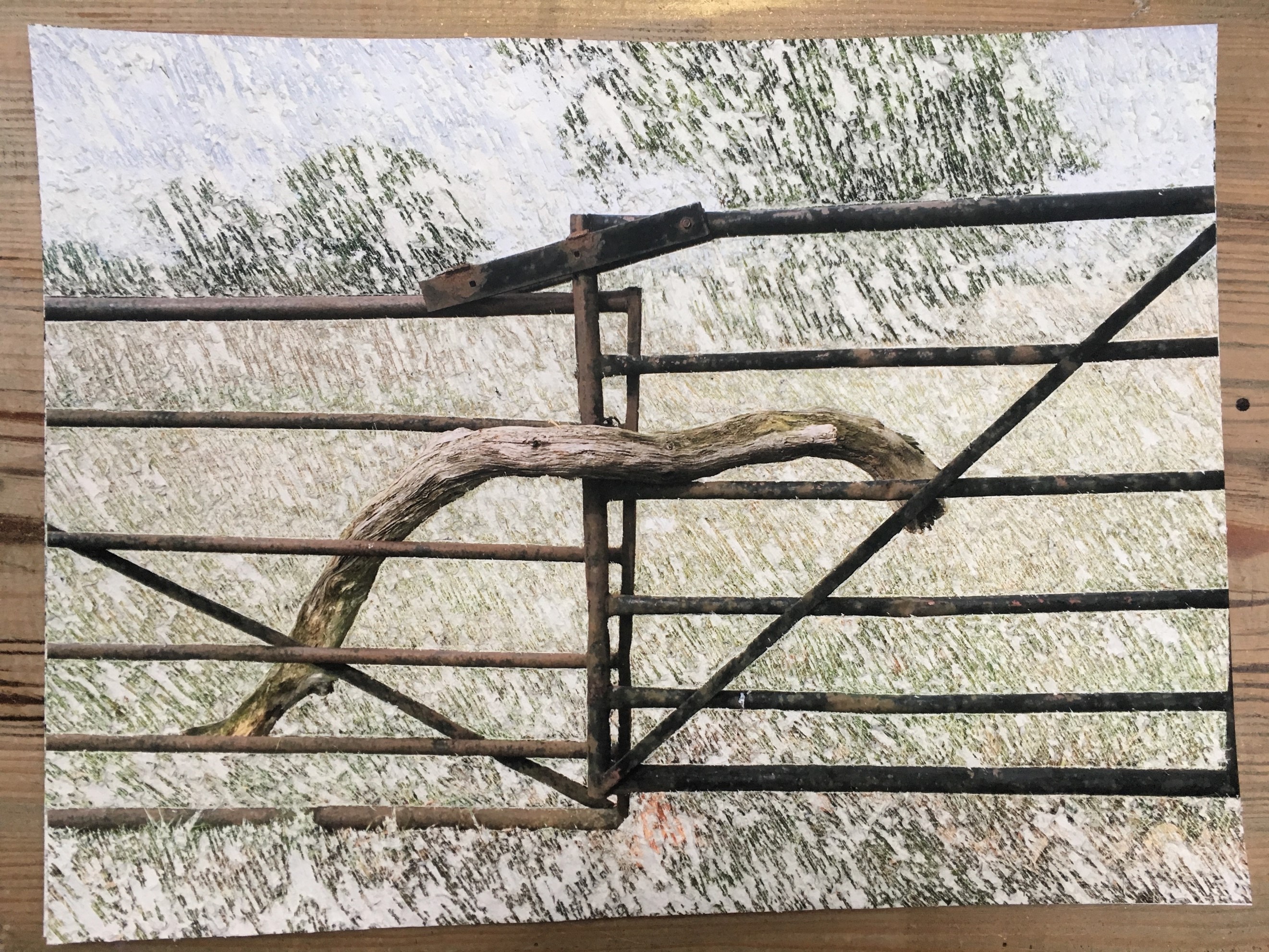What would you put in a Museum of Contemporary Farming?

By Georgina Barney, artist, and curator of the Museum of Contemporary Farming
The Museum of Contemporary Farming is an impossible project. Commissioned by the MERL as part of the project Making, Using and Enjoying: The Museum of the Intangible, it is manifested by me, its curator, with invited guests and the public. I’ve been using Twitter to gather conversations, ideas and artwork. Meanwhile artist and farmer Kate Genever has developed a series of ‘scratch drawings’ exploring the improvised use of sticks on her farm.
Museums are often places where knowledge about the past is deposited. Meanwhile the contemporary is ever-emerging, always current and never fixed. Such a contemporary museum can therefore never be realised because such a museum would become obsolete as soon as it were iterated.
‘Contemporary’ is also a word often used about art to proclaim it as the most cutting edge. However these words, ‘museum’ and ‘contemporary’, combined with ‘farming’, resist farming as a metaphor for the past. The Museum of Contemporary Farming was conceived as a challenge to this view of farming. There are many alternative views: farming as a science that develops innovative technology; farming as the battleground of politics, of ethical and ecological struggle; farming as the performance of a kind of practical poetry.
The Museum of Contemporary Farming is an impossible project because farms are places. Their meaning and flavour arises very particularly from the soil, which varies with the terrain and climate. What happens on a farm is connected to the place it is. To have a museum, a single site for farming, is contrary to this character of farming. For where could it be that would adequately represent all places?

But the Museum of Contemporary Farming, impossible as it is, is an important project. Farming is crucial for obvious and increasingly urgent reasons: the production of food, especially in relation to poverty and climate change; the management of the landscape; the rural experience; the politics of local and global trade. And so on. But how can we really know farming, in order to make sense of these issues, and of our contemporary world?
The Museum of Contemporary Farming is important because farms are by nature isolated. They are distanced from the city, the town and even the village. They are normally closed to the outside world, to curiosity or inquiry; and especially to the art world. The metropolitan confidence of attending an exhibition in a gallery is rarely at home here. Agriculture is therefore vulnerable to being unfamiliar, strange, ripe for fantasy, an illusion, misread or ignored.
The Museum of Contemporary Farming invites people to speak by suggesting ‘things’ to include. They may be too large or expensive – like a precision-drilling tractor or a combine harvester – or too simple or boring – like plastic drums, old tyres and bailer twine – to include in a real museum. And they don’t have to be physical ‘things’ – they may be images, ideas, attitudes, or concepts, such as trust, community endeavour, insecurity, or the weather. The Museum of Contemporary Farming is, really, a vehicle for conversation. See the suggestions so far on Twitter and tell us what you would put in the museum using the hashtag #MuseumContemporaryFarming.
The best ideas, along with an exhibition of Kate’s artwork made on her family farm in Lincolnshire, will feature in an installation in the Digging Deeper gallery on the Mezzanine at the MERL, opening on Thursday 26 April. There will also be an event that evening, 5:30–7:30pm, where farmers, artists and the public will be invited to debate what should go in the Museum of Contemporary Farming. To join us in the discussion, book your place here. In the meantime, join the conversation on Twitter.
To find out more, visit the Museum of Contemporary Farming website.
The Museum of Contemporary Farming is one of several creative responses commissioned by the MERL for the project Making, Using and Enjoying: The Museum of the Intangible.
The project is funded by the Arts Council England (ACE) Designation Development Fund and the Wellcome Trust.


